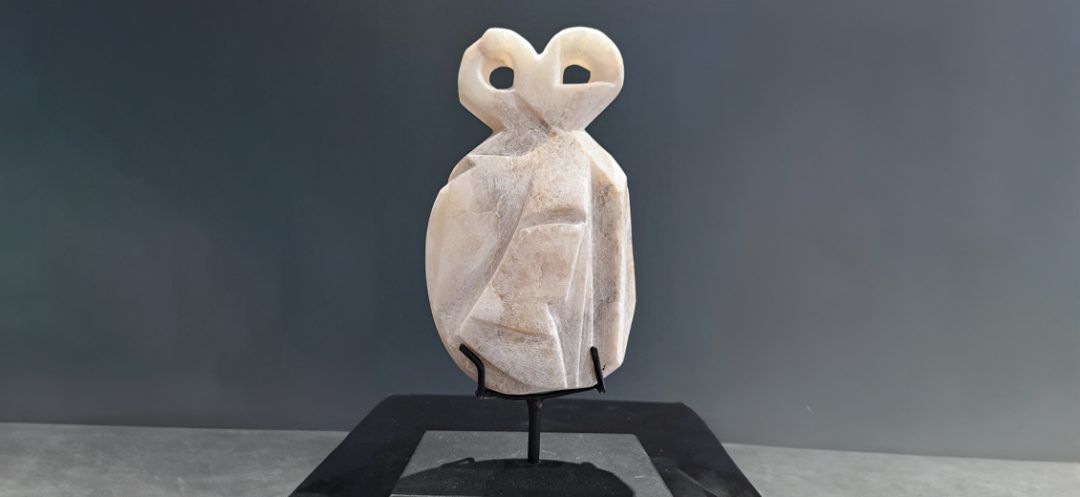
Randa Nehmé is exhibiting at Maya Art Space gallery until August 8th, showcasing poetic sculptures that pay homage to over thirty years of experience in her craft.
Although Randa Nehmé is an experienced sculptor, this is her first time exhibiting in a city gallery. “I am attached to nature, the stone belongs where it is,” she says. She works directly with stones on-site, shaping the surrounding space and creating a true symbiosis between the stone and its environment.
The stones on display are the ones she co-decided to bring to Beirut for this exhibition. For the artist, the stones are alive and are residents of the places they inhabit. Her work over the years is primarily a ritual of dialogue with the material, a mark of her respect for it.
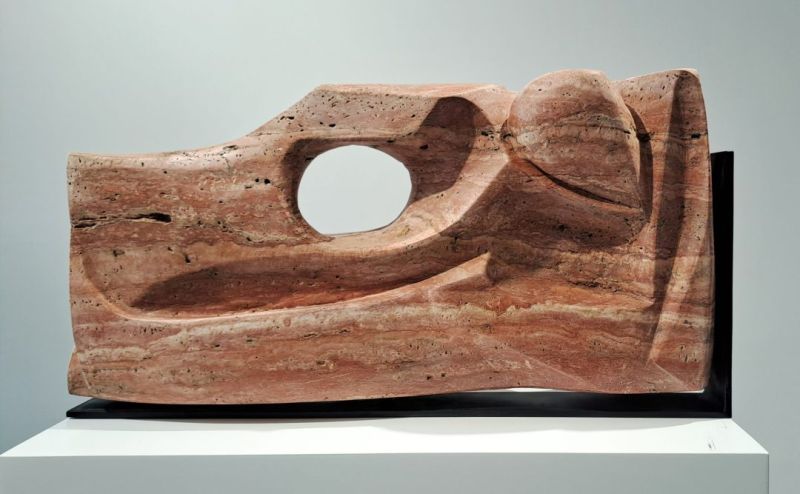
The theme 'Honné et Tatémaé', a Japanese expression meaning “being and appearing,” is inspired by small sculptures titled “lying jewels,” which are like “little lies that can crumble when poked, for lies are fragile like jewels,” and “Ojâs” sculptures made with different patinas to show how the same face can give various expressions.
“A smiling eye, filled with glimmers of uncertainty… and the other so distant… perhaps tearful… with a taste of anything…” - Excerpt from one of Randa Nehmé’s poems, “... ojâs ...”
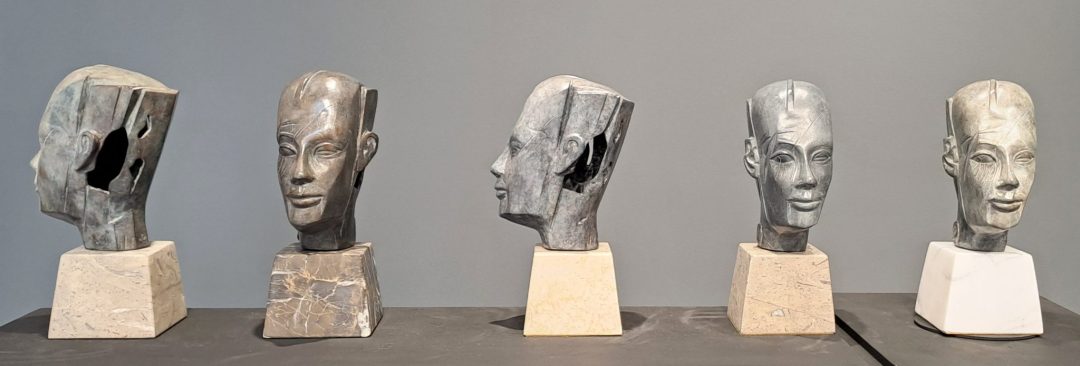
The theme is above all a sensitivity of expression that the artist cultivates in her creations and the accompanying poems.
“Being and appearing… desire of true feeling on a bed made of wind… The well-being of a society takes precedence over individual opinion. Honné and Tatémaé… A virtue I wanted to show” - Excerpt from one of Randa Nehmé’s poems on the theme 'Honné et Tatémaé'.
The small sculptures are presented like jewel cases. Such is the case of “the idol with eyes,” a sculpture in millennial alabaster, originally an offering on which the artist carved two portraits.
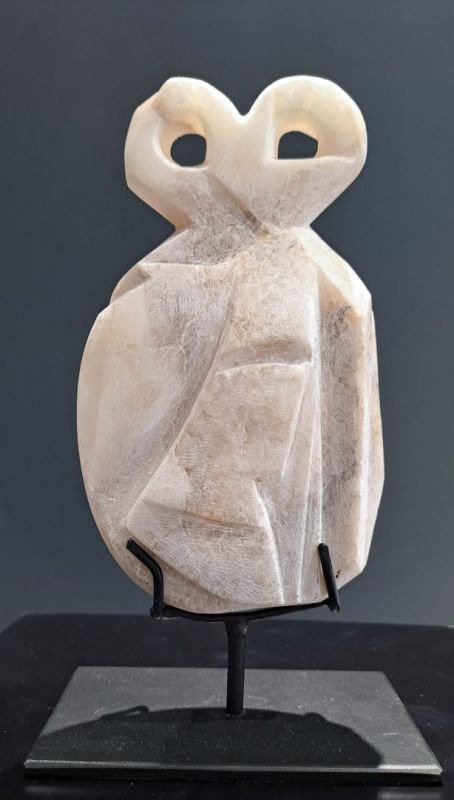
Each piece is unique or in very limited editions, and the artist is intimate with each creation, presenting the material and its history.
Such is the case with the sculpture made with a stone from Burgundy, sourced from a historic quarry that served the constructions of the Trocadéro and the Louvre. “It is a robust, non-capricious stone, clear, and compact to work with.”
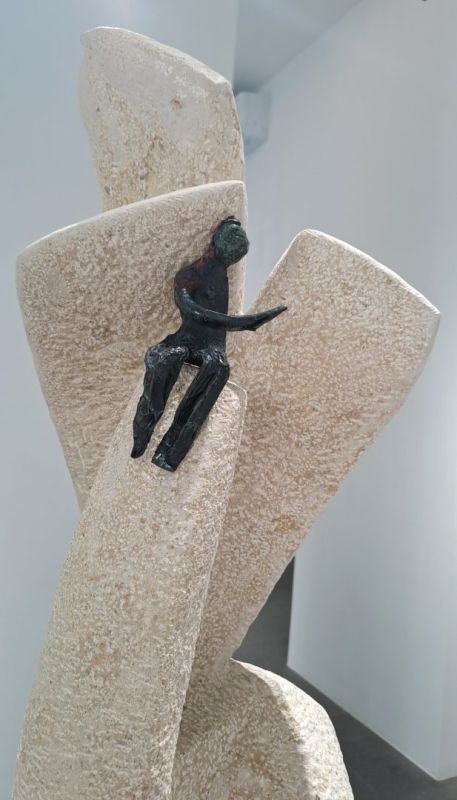
The artist draws directly on the stone and enjoys working with a knife as well. “I believe the tool is the hand,” she says, emphasizing the importance of confidence in the gesture and knowing when to rest the tool.
She loves working with fire and stone because nature allows her to work. Both start on equal footing, “providing a foundation for the work where knowing when to stop is essential.”
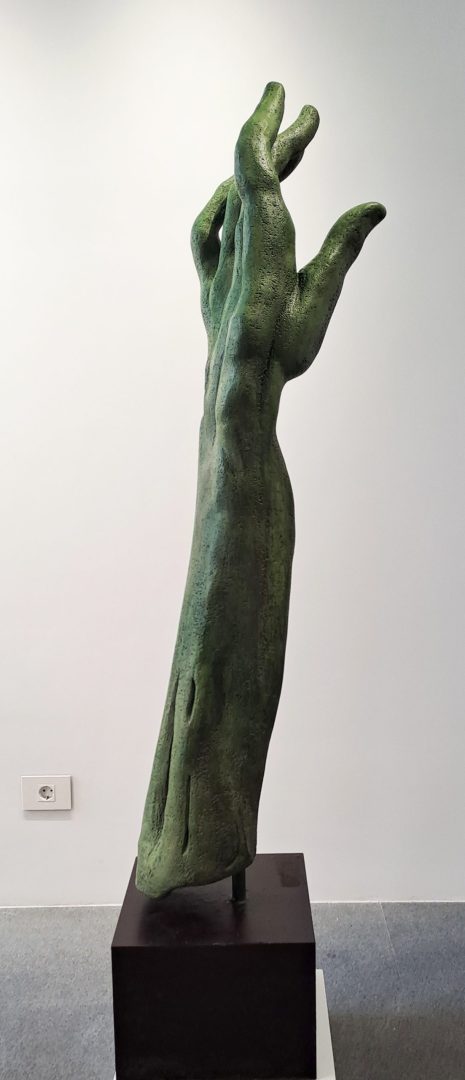
In constant work, Randa Nehmé loves her craft and the constancy of this fine and clear dialogue.
As she writes, "Day after day, I have learned the beauty of direct carving and sculpture… a beauty that never ceases to delight me. Returning to nature, what is most beautiful, allows me to live freely… insolently free…”
To read more, click here
This article was originally published on:
https://www.agendaculturel.com/articles/honne-et-tatemae-le-dialogue-avec-la-pierre-de-randa-nehme
Although Randa Nehmé is an experienced sculptor, this is her first time exhibiting in a city gallery. “I am attached to nature, the stone belongs where it is,” she says. She works directly with stones on-site, shaping the surrounding space and creating a true symbiosis between the stone and its environment.
The stones on display are the ones she co-decided to bring to Beirut for this exhibition. For the artist, the stones are alive and are residents of the places they inhabit. Her work over the years is primarily a ritual of dialogue with the material, a mark of her respect for it.

The theme 'Honné et Tatémaé', a Japanese expression meaning “being and appearing,” is inspired by small sculptures titled “lying jewels,” which are like “little lies that can crumble when poked, for lies are fragile like jewels,” and “Ojâs” sculptures made with different patinas to show how the same face can give various expressions.
“A smiling eye, filled with glimmers of uncertainty… and the other so distant… perhaps tearful… with a taste of anything…” - Excerpt from one of Randa Nehmé’s poems, “... ojâs ...”

The theme is above all a sensitivity of expression that the artist cultivates in her creations and the accompanying poems.
“Being and appearing… desire of true feeling on a bed made of wind… The well-being of a society takes precedence over individual opinion. Honné and Tatémaé… A virtue I wanted to show” - Excerpt from one of Randa Nehmé’s poems on the theme 'Honné et Tatémaé'.
The small sculptures are presented like jewel cases. Such is the case of “the idol with eyes,” a sculpture in millennial alabaster, originally an offering on which the artist carved two portraits.

Each piece is unique or in very limited editions, and the artist is intimate with each creation, presenting the material and its history.
Such is the case with the sculpture made with a stone from Burgundy, sourced from a historic quarry that served the constructions of the Trocadéro and the Louvre. “It is a robust, non-capricious stone, clear, and compact to work with.”

The artist draws directly on the stone and enjoys working with a knife as well. “I believe the tool is the hand,” she says, emphasizing the importance of confidence in the gesture and knowing when to rest the tool.
She loves working with fire and stone because nature allows her to work. Both start on equal footing, “providing a foundation for the work where knowing when to stop is essential.”

In constant work, Randa Nehmé loves her craft and the constancy of this fine and clear dialogue.
As she writes, "Day after day, I have learned the beauty of direct carving and sculpture… a beauty that never ceases to delight me. Returning to nature, what is most beautiful, allows me to live freely… insolently free…”
To read more, click here
This article was originally published on:
https://www.agendaculturel.com/articles/honne-et-tatemae-le-dialogue-avec-la-pierre-de-randa-nehme
Read more



Comments